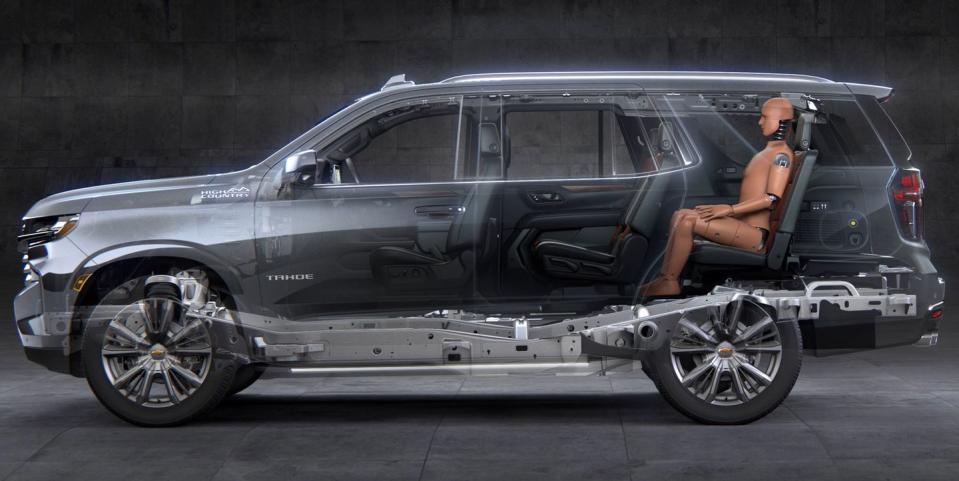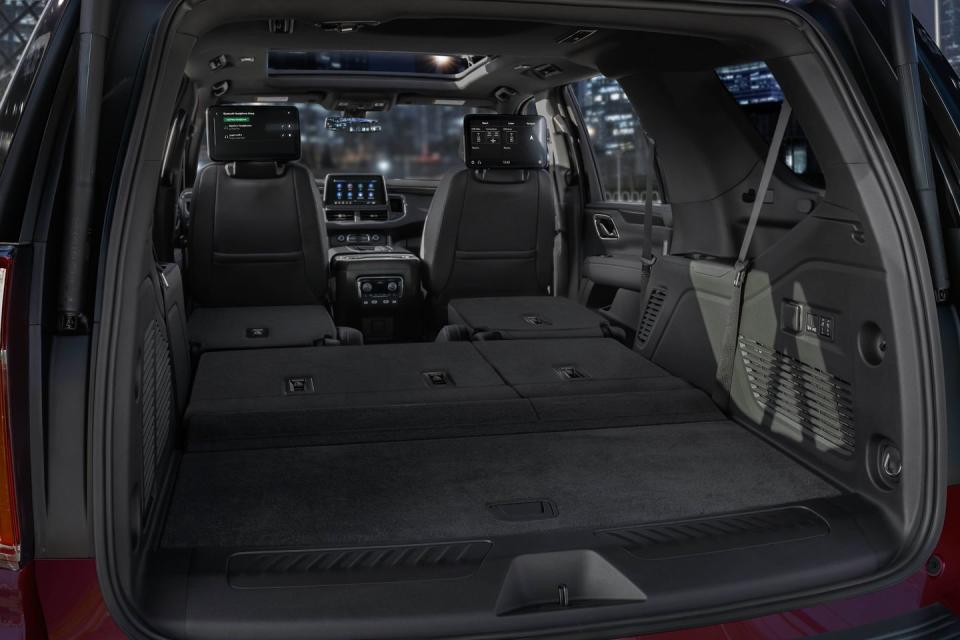Chevy Tahoe/Suburban Independent Rear Suspension Is Better Late Than Never

The 2021 Chevrolet Tahoe and Suburban full-size SUVs now have an independent rear suspension (IRS), adopting it 17 years after their main competitor, the Ford Expedition.
The 2021 models with IRS now have a lower floor—up to 5.3 inches lower, which should help with loading in hockey bags, lumber, and people.
We understand why Chevy waited so long to move away from the live axle, but following is a brief explanation of what's gained by moving to an IRS.
As the struggle for automotive supremacy rages on, many changes come when companies try new ways to differentiate their vehicles from the competition. In this case, though, the Suburban and Tahoe are merely catching up. It was nearly two decades ago, way back in 2002, that Ford's Expedition switched from the tried-and-true live rear axle to an independent rear suspension (IRS). What took Chevy so long?
A live axle is a simple and durable design. They have been used for decades as the workhorse of payload and towing. But those big capabilities come with a few downsides. A live axle uses its axle housings to assist in locating the wheels. This gives the axle great strength—and it is its biggest downside, because when one wheel moves, so does the other. Independent rear suspensions don't suffer from this ride and dynamic limitation, and they also have some packaging benefits. And typically, IRSs have lower payload and towing capacities than an all-things-equal live axle (there are always exceptions).

With the new Tahoe and Suburban, GM set out to address some areas of improvement in the previous generation. The move to an IRS allows for the floor of the new model to be lowered. This 5.3-inch drop is possible because the new model doesn't need to account for the axle's complete range of motion, including the large differential. With the IRS setup, the rear differential does not move up and down with the wheels, and while the multilink setup GM went with is slightly heavier—50 to 100 pounds depending on the model, according to GM—than a stick axle, the wider range of tuning ability—which means it's better dynamically—and the packaging benefit are worth the mass penalty. The bottom line is that an IRS is more sophisticated and should improve ride and handling.
When combined with the Tahoe’s 4.9-inch wheelbase stretch, the IRS yields 10.0 more inches of legroom in the third row and 10 cubic feet of additional cargo space behind it (which GM is quick to point out is more than the current Ford Expedition and two-thirds more than the outgoing model). The Suburban's dimensional changes are not as noticeable, most of them taking place on the inside, as the overall length of the 'Burban only increases by just over an inch.

The wheelbase, however, does increase by 4.1 inches, allowing the door openings to grow as well. The increase in wheelbase and lowering of the floor helps the Suburban increase its maximum cargo capacity by 23 cubic feet. The second and third row legroom get an increase of 2.3 inches and 2.2 inches respectively, generous considering that the second row is also the first in Suburban history to slide fore and aft.
It all sounds great on paper, but we’ll withhold any judgments until we've gotten behind the wheel. For now though, we expect the 2021 Tahoe and 2021 Suburban to deliver better ride, handling, and space for its occupants and their belongings than ever before.
You Might Also Like

 Yahoo Autos
Yahoo Autos 